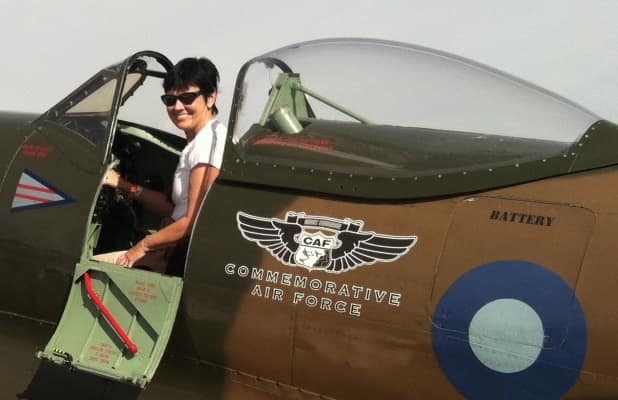Air & Space/Smithsonian Entertains, Educates Aviation Enthusiasts in Print, Online

The aviation and aerospace industry is like the ideal small town. Everybody knows everybody else, and everybody’s happy to give you information – especially if you’re asking a pilot about her airplane. This lesson is one of many learned during Linda Shiner’s career.
Working with helpful and cooperative sources is a blessing for journalists like Shiner, who has worked at Air & Space/Smithsonian magazine since 1987.
“I had been the editor of Humanities, the magazine of the National Endowment for the Humanities,” she said. “When I started, I didn’t know an F-22 from a DC-3.”
As editor, Shiner’s goal is to produce a magazine and website that deliver a fun aviation and space exploration reading experience while also fulfilling the Smithsonian Institution’s mission to further “the increase and diffusion of knowledge.”
“My job is to select the best stories about the people who have contributed to aviation history and about those who are exploring things today,” said the English alumna from The College of William and Mary. “And if I want EVERY reader to enjoy those stories, I have to make sure that they’re written clearly, without jargon, and that they’re worth the time it takes to read them. So they have to be important as well as entertaining.”
Shiner added, “We emphasize the humans behind the hardware, but we’re also very careful to include something in every issue for our readers’ inner geek.”
When looking for new talent, she seeks creative writers who can clearly tell a story. Staff positions are often hard to come by, but Air & Space is always looking for good freelance writers.
“My former boss, the founding editor, used to say that our brand of journalism is a talent business: You have to study to learn the subject, but story sense is something that’s built in,” she said.
One way Shiner has educated herself about the industry is through membership in organizations like the Experimental Aircraft Association and Air Force Association.
“If you want to learn about aerospace and keep abreast of what’s happening in the field, I think you have to belong to enthusiast and professional organizations and get out among the people who may be reading your magazine,” she said.
These days, publications also need to respond to advances in technology.
“We’re having so much fun producing the digital edition of Air & Space for the iPad,” Shiner said. “Tablets offer a lot of creative enhancements to storytelling; video, sound, animation. I still value the aesthetics of words and pictures on paper, and most of our readers do, but I do think you get more bang for your buck with the iPad version.”
That being said, she doesn’t believe print magazines will become obsolete.
“I think paper magazines are like vinyl; they won’t disappear completely for some of the same aesthetic reasons and because the delivery system, while expensive, is pretty reliable,” she said. “And there’s just something fun about opening the mailbox and finding your favorite magazine inside.”
Careers like Shiner’s can be pursued with degrees such as a Bachelor of Science in Communication. Learn more at http://worldwide.erau.edu/degrees-programs/programs/bachelors/communication/index.html.
